Sensor Connection

Physically, the basic circuits of a sensor can fundamentally be constructed with 2, 3, or 4 wires. There is some basic information to be considered when interconnecting these sensors.
Basic Info: Interconnecting Multiple Sensors by Type of Output
Inductive sensors can be connected in parallel to other mechanical or electronic switches. The following must be observed.
Parallel Connection of Multiple Sensors
3-Wire Sensors
In principle, inductive sensors in three-wire technology can be connected in parallel to mechanical switches or other sensor outputs. One exception is sensors with push-pull output. This type of sensor cannot be connected in parallel, either to sensors or to mechanical switches.

2-Wire Sensors
If multiple 2-wire sensors are connected in parallel, the sum of all residual currents flows through the load and may prevent the load from switching off. This limits the maximum number of inductive sensors connected in parallel in 2-wire technology.
When 2-wire sensors are connected in parallel to mechanical switches, the load can become deactivated for a short time.
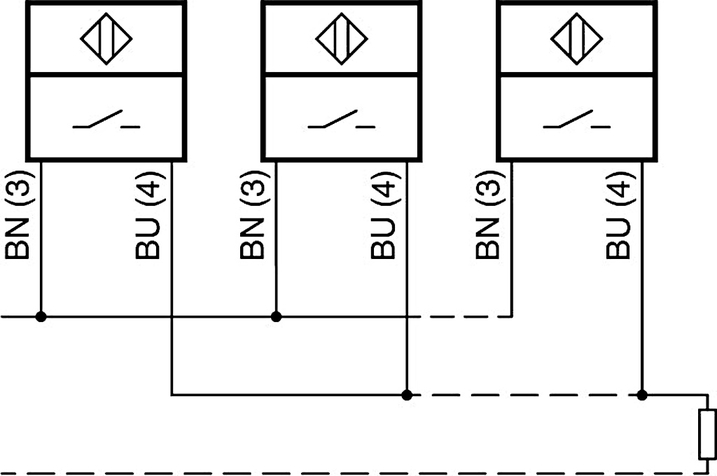
Series Connection of Multiple Sensors
3-Wire Sensors
Due to the readiness delay of the individual sensors, the reaction time will increase when 3-wire sensors are connected in series. In addition, the supply voltage of downstream sensors is always lower due to the voltage drop at the sensor output stages when 3-wire sensors are connected in series. The series connection of a single 3-wire sensor to one or more mechanical contacts is not critical.

2-Wire Sensors
The series connection of 2-wire sensors is generally critical. Each sensor requires a specific supply voltage and a supply current for fault-free operation. This is not always guaranteed when multiple 2-wire sensors are connected in series and may lead to unpredictable behavior.

The series connection of a single 2-wire sensor to one or more mechanical contacts is not critical. However, the readiness delay of the sensor must be taken into account.
Note: We generally recommend that inductive sensors are not connected in series. The interconnection of multiple sensors via logic modules is preferable in terms of predictable behavior and reliable function.
Additional Information
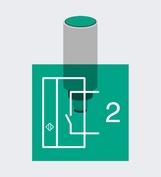
2-wire sensors are operated in series to the connected load. There are no separate connections for the load circuit and the voltage supply of a 2-wire sensor.
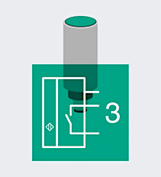
3-wire sensors are sourcing, type "PNP", or sinking, type "NPN", with separate connections for the power supply and for the output.
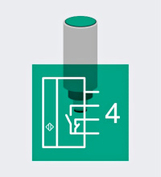
4-wire sensors are proximity sensors of sensor type "E" (~3-wire). The use of these sensors can keep the number of sensor variants to a minimum and thus reduce storage costs.
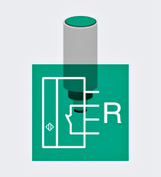
Some sensors have relay contact outputs. Sensors with relay contact output are used when high load currents are required and/or when galvanic isolation between the sensor circuit and the load current circuit is required.










 +61 3 9358 3400
+61 3 9358 3400